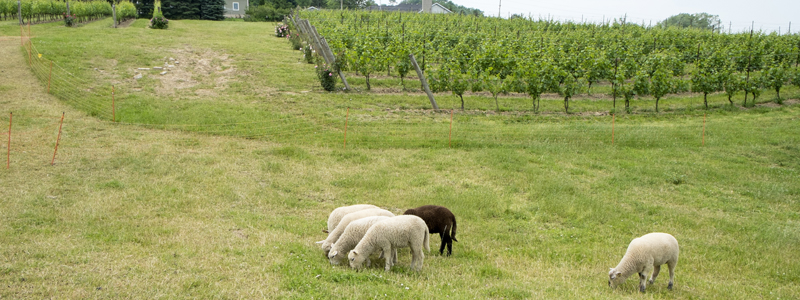The world of wine can be confusing to those who are either just getting into it or those who just want to enjoy good wine. For the latter it is even more confusing because the industry is a-twitter with buzzwords intended to lure us into a purchases. Sometimes these marketing tactics are even pretty shady. In the ’70s and the ’80s one shady tactic was California claiming to offer Chablis and Burgundy, simply using these famous names to label their wines – there is no such thing as California Chablis, but it sold a lot of wine while it lasted.
Some marketing tactics, however, aren’t shady so much as they are an attempt to group an idea together without the proper explanation, causing even more confusion for a consumer trying to get into the latest trend without looking like an idiot. Enter the newest industry buzzword: “Natural” or “The Natural Wine Movement.”
On a recent trip to a local wine store – not a shop mind you, a store, with big supermarket-like aisles – upon entering I came across a cozy section tucked away from the massive rows of bottles labelled “Natural Wines.” It was a quiet little area away from the hum of the customers, consisting of twenty or so bottles of red and white and a few hues in between. My curious gaze took it all in, scanning labels and searching for recognition. Some I knew, some I did not, and after examining each one, as my ADD got the best of me, I wandered onto the main shopping floor.
Having an Italian restaurant, I often find myself in the Italy section, so that’s where I wandered. As I walked among the slanted wooden wine shelves I noticed a bottle from one of my favorite winemakers from Sicily. It’s a wine made by a young winemaker who uses biodynamic practices in the vineyard and the cellar, producing beautiful, well structured wines that have gained the adoration of New York somms from Williamsburg to Columbus Circle. Then it hit me. I walked back over to the “Natural Wines” section and looked for her bottle. It wasn’t there. I was confused. Wasn’t her wine “natural?”
Since the early 2000s when the “green movement” took the U.S. by storm – even compelling NBC to have a green peacock for at least two weeks – we’ve been seeking out artisanal this and farm fresh that. We want our laundry to be washed with organic detergent and our structures to be built from reclaimed wood. It’s a wonderful thing. Then marketing gets involved and all the posers come out of the woodwork, entering into the frenzy, researching those buzzwords and using them until their meanings diminish to cliché, like the aforementioned Californian Chablis. Have you seen McDonald’s recent ad campaign? Among all this confusion are products that not only legitimately deserve these trending titles but are the reason the trending titles exist in the first place.
In the wine world, the word “organic” began the craze. It took a minute, but eventually the majority understood what it meant. Next was the craziness that is biodynamic agriculture. This took a little longer for people to grasp – they bury a horn filled with manure only to unearth it and turn said manure into natural fertilizer? what? – but in time people warmed to the idea of what I like to call the first organic movement and started seeking out biodynamic wines.
And now, just when the wine buying public is getting comfy with these two ideas, along comes another to throw a wrench in the gears, “Natural Wine.” The term has been thrown around in wine circles for five or six years now and has just recently hit the mainstream. Are these wines more “natural” than organic and biodynamic? How more natural can you get than that?
Our wine guru on the ground in NYC Eric Asimov put it best when he said natural wines are, “wines that are made with an absolute minimum of manipulation: grapes grown organically or in rough approximation, then simply set forth along an unforced path of fermentation into wine, with nothing added and nothing taken away.” Notice the word “organically” in there?
Natural wine is organic wine. Natural wine is biodynamic wine. Natural wine is wine made with the idea of letting nature be the key player in growing wine grapes (natural fertilizers, animals grazing among the vines, etc.) as well as coaxing wine grapes into wine (native yeasts, no added sulfites). As a result the winemaker is truly at nature’s mercy. These wines tend to not be polished or linear. They are bit untamed, exhibiting wild characteristics you may not be used to. Among those cherry notes and hints of melon could be a slight fizziness or an initial waft of sulfur as these are natural byproducts of winemaking, often squelched by industrial practices.
There are some absolutely stunning “Natural Wines” out there that will speak to your soul and send your palate to ecstasy. But buyer beware. The consequence of this wine style are the few bottles out there that almost ruin it for all of us, with a lack of balance and uneven qualities, making what should be soulful earthy notes with hints of mushroom and currant smell and taste like the swamp planet Degobah in the Empire Strikes Back.
So go out and enjoy natural wine. Trust your wine merchant. And know that asking for natural wine is the same as asking for something that is biodynamic or organic. I really want to go back to that wine store and take all the wines from the natural wine section and restock them in their respective regions and tell the staff to talk to the customer. Inform them. It’s the only way we are really going to start enjoying this new buzzword.
Header Image via Shutterstock.com

